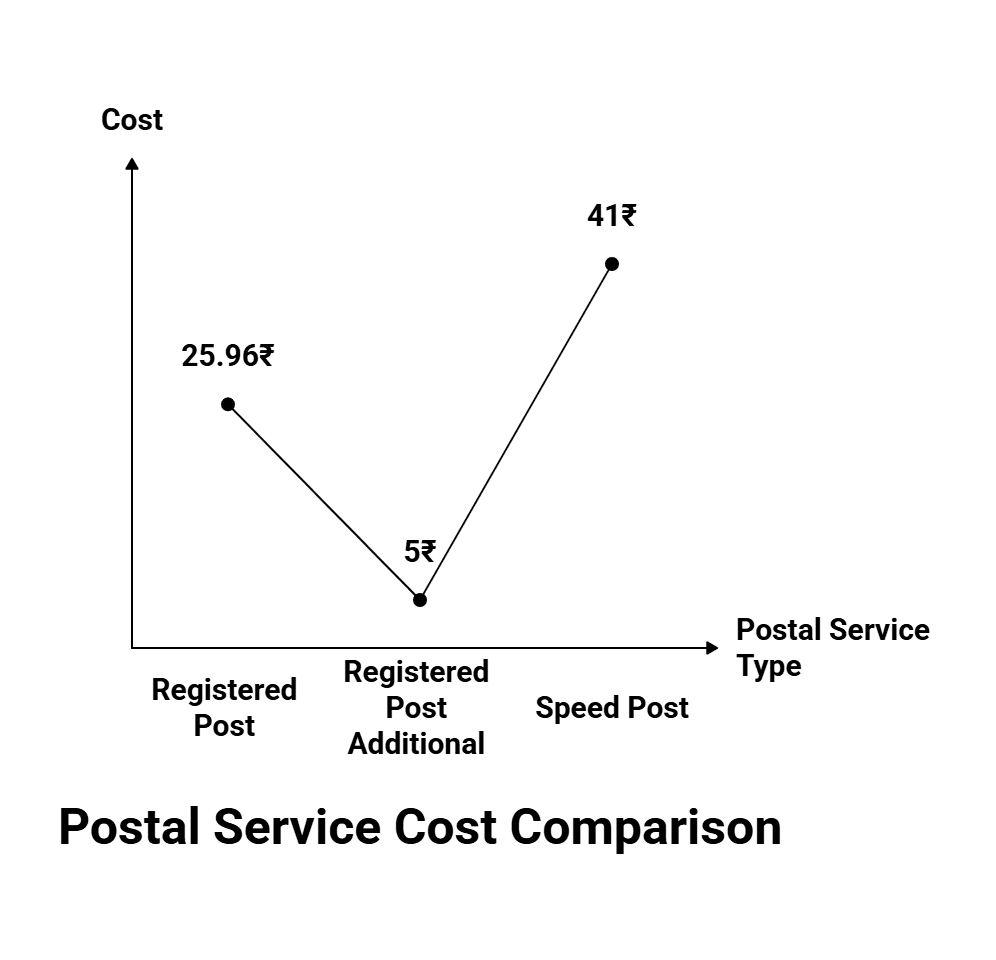Something major is slipping quietly into the past this September. After over five decades of ensuring reliable, secure door-to-door deliveries, India Post is set to discontinue its iconic Registered Post service, and, if you grew up in India, chances are you or someone in your family have memories tied to that familiar blue-and-maroon slip, stuffed carefully inside envelopes carrying hopes, government notices, job offer letters, loan documents, legal notices, you name it.
This isn’t just a footnote in a government report. It’s a seismic operational shift, one that touches the daily lives of millions across the nation, from busy government offices in Delhi and educational institutions in Mumbai, all the way out to distant post offices nestled in rural Odisha or the heat-drenched bylanes of Andhra Pradesh. And, here’s the kicker: Registered Post isn’t quite dying; it’s being reborn, sort of, within the faster, fancier structure of Speed Post. Let’s break it all down.
What’s Changing:
Registered Post ends September 1, 2025.
- Service is being merged into Speed Post.
- Speed Post will now handle all features critical to Registered Post, secure handling, proof of delivery, and acknowledgement receipts.
If you relied on Registered Post for secure mail, official government letters, university admission notifications, and court notices, the baton now passes fully to Speed Post, with its promises of faster delivery and real-time tracking.
Why This Happened: A Story Written in Numbers and Technology
India’s postal system is one of the largest and oldest in the world. Think about this: Registered Post has been an essential element for generations, trusted especially for legally valid communications.
But, believe it or not, the ground started shifting years ago. There’s nothing subtle about the numbers:
- In 2011–12, India Post handled 244.4 million registered mail items.
- By 2019–20? That number sank to 184.6 million, a whopping 25% drop, and that’s before the pandemic nudged more of us online.
What’s behind this steady decline? Kind of a perfect storm:
- Unstoppable rise of digital communication, emails, instant messages, and secured portals for government communication.
- Private courier companies are making inroads, even into small-town and rural delivery spaces.
- E-commerce giants are building their own logistics webs.
When every bank, government department, and university started offering digital alternatives, and when digital records became accepted proof in many legal scenarios, usage fell. Fast, frankly.
How the Transition Will Work
So, from September 1, 2025, if you want to send something you would previously have dispatched via Registered Post? You use Speed Post. Simple, right? Maybe not for everyone. Here’s what’s happening under the hood:
Same Protections, New Package
Speed Post already offered tracking and delivery speed, but now it will inherit all the legal and procedural features that made Registered Post a staple in public life:
- Secure transmission of letters and parcels.
- Proof of delivery.
- Delivery only to the intended recipient, if specifically requested.
- Physical acknowledgement, handwritten, app-based, or electronic.
Software, Forms, and Operations Overhaul
All digital and physical booking counters, customer service desks, and postal outlets nationwide, over 164,000 offices, are scrambling to update their software interfaces and remove any references to “Registered Post” on forms, websites, receipts, and information boards. It’s a logistical mountain, made more complicated by India’s vast, multilingual population.
Directives to Institutions
By order, every department, court, educational institution, and regular user, public and private, has until the September deadline to switch over.
Staff are being trained on the new unified workflows. Customer awareness campaigns are underway, especially in rural and less digitally literate regions, to smooth the transition… even if nostalgia runs deep.
A Short History: Why Registered Post Mattered
Registered Post was introduced back in the British period, a time when the need for secure and verifiable correspondence stretched from judicial communications in colonial courts to personal milestones (wedding invitations, joining letters for coveted government jobs, legal notices to banks and tenants). Over time:
- Legal Validity: Documents sent by Registered Post, with their proof-of-dispatch and proof-of-receipt, were (and still are) recognized by courts and government offices.
- Affordability: Priced much lower than private courier services, often crucial for citizens in rural India and small businesses on shoestring budgets.
- Trust: When your future hinged on a simple envelope making it to the right desk, Registered Post was the gold standard.
Why Some Are Worried
Modernization’s great, no question. But let’s be honest, not everyone is celebrating. There’s a reason old-timers, small traders, farmers, and lower-income groups are anxious. The change brings:
Cost Differences

Here’s the cold math:
- Registered Post: ₹25.96 plus ₹5 for every 20g.
- Speed Post: Starts at ₹41 for up to 50g.
So, for a basic letter, you pay around 20–25% more with Speed Post.
Will it pinch wallets? For millions who counted on affordable Registered Post, especially in rural and remote India, it might.
Access Inequality
Digital literacy and access are uneven. For the elderly, the less digitally connected, and those in far-flung villages, dealing with new systems, forms, or price hikes could make things difficult.
Sentimental Value and Trust
Let’s face it, no app notification can replace the tactile authority of a Registered Post slip. Memories and trust, built over decades, don’t migrate overnight.
Official Reasoning: Why Kill a Trusted Brand?
Department of Posts officials and IT experts say the decision is rooted in efficiency, and, yes, necessity.
- The merger eliminates duplication in services, combines the best features of both worlds (security and speed), and “delivers greater customer convenience by consolidating similar services under a single digital framework.”
- Modern logistics require “real-time tracking for all articles” and a unified back-end for delivery notifications, payment integration, and complaint resolution.
- The government’s “Digital India” push and evolving user needs make a flexible, streamlined service essential, one that can connect a Naga village just as easily as a Mumbai suburb.
Believe it or not, few realize this: Internally, Registered Post doesn’t disappear. “Registration” remains as an add-on option within Speed Post booking; you pay a little more, and the item gets that additional layer of legal and delivery security.
How Will It Work in Practice?
Scenario 1:
You’re an educational institution sending admission offer letters.
- Before: Book via Registered Post.
- Now: Book via Speed Post; check “Registration” add-on at counter or online.
Scenario 2:
A citizen in a remote village needs to send a legal notice.
- Before: Registered Post to ensure court acceptance.
- Now: Speed Post + Registration, and the documentation stands up in court just as before.
Scenario 3:
A business needs affordable delivery for routine documents.
- Before: Registered Post.
- Now: Slightly pricier Speed Post, but with faster delivery and tracking.
A Look at the Future: India Post’s Digital Ambitions
Phasing out Registered Post isn’t a standalone development. India Post is in the midst of a massive technology overhaul, Advanced Postal Technology (APT), Integration 2.0, you name it. The plan is to:
- Improve transaction speeds, integrate with Unified Payment Interfaces (UPI), and allow digital signatures/receipts.
- Provide real-time, app-based tracking and delivery notifications right on customers’ phones.
- Streamline customer complaints, refunds, and claim redressals with modern management tools.
- Retain postal services in remote/rural India, ensuring universal coverage, even as urban users shift to purely digital channels.
On August 5th, 2025, over two million articles were booked, and 2.5 million delivered nationwide using the new platform, a testament to the scale, but also to the complexity, of this transition.
The End of an Era, Or the Start of a New Chapter?
For many, Registered Post will remain etched in personal history, reminders of job appointments that changed lives, summons that triggered family drama, letters that stitched distant families together during times of joy or grief.
But, here’s the thing: The “registered” feature, with all its legal protections and symbolic heft, isn’t gone; it’s simply tucked into a faster-moving, tech-savvy avatar. The blue-and-maroon slip? That’s going in the archives. But the assurance it guaranteed, that your message would make it to its destination, unaltered and acknowledged, carries on. Under a new name. At a new price.
Funny thing is, change in India’s postal ecosystem comes in slow, massive waves. For now, in post offices from Kashmir’s hills to the sands of Tamil Nadu, staff will still patiently answer your questions, shuffle your parcels, and hand you that all-important proof of posting, whatever it may look like on September 1, 2025.
Key Takeaways at a Glance
- Registered Post service to end from September 1, 2025, across India; features absorbed into Speed Post.
- All departments, courts, universities, banks, and citizens must switch mailing protocols accordingly.
- Cost for basic mail increases by 20–25% as Speed Post becomes the delivery standard for verified and legally sensitive communication.
- Legacy of Registered Post, trust, legal validity, and documented proof live on as a registration add-on within the Speed Post system.
- Rollout is part of a massive technology overhaul across India Post’s network, aimed at unifying, speeding up, and digitizing services nationwide.
- Grief, nostalgia, and a few practical headaches are expected, especially in rural and semi-urban communities. But every feature critical to legal, business, and government use continues, so a bit of the old, a bit of the new.
The Indian postal revolution continues, faster, pricier, and cloaked in a new name. Maybe, years from now, someone will write about the last Registered Post letter sent and who received it. Until then, it’s Speed Post that will carry the baton… and your memories, too.






















